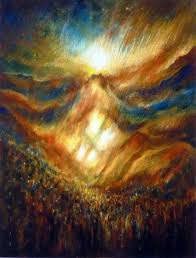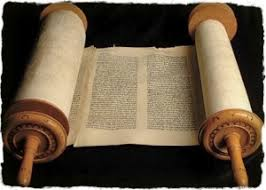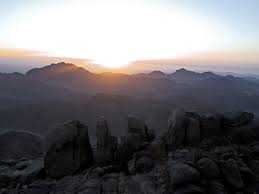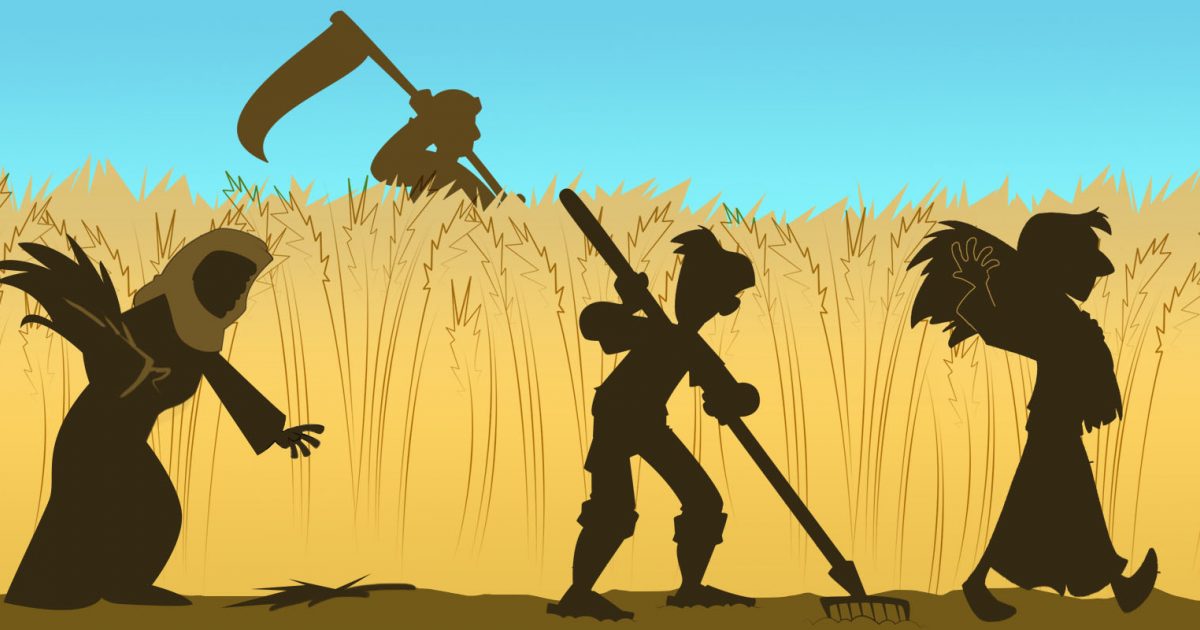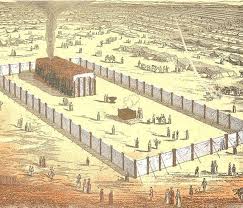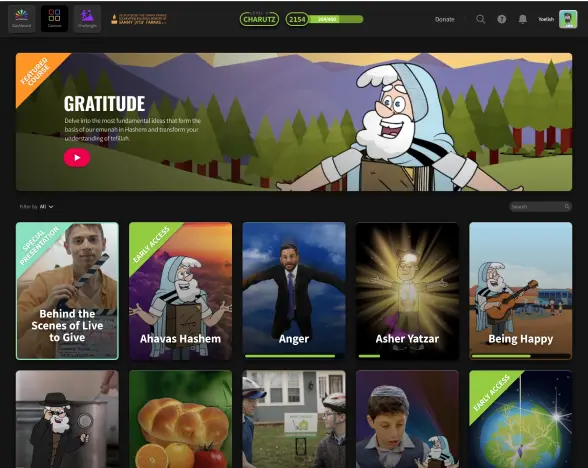
Shavuos: Time To Re-connect
Table of Contents
-
Introduction
-
The Unique Wisdom of the Torah
-
The Mountain That Chose Us
-
The Silent Sound of Torah
-
Naaseh V'Nishma
-
The Power of One: Torah and Unity
-
A Holiday of Chesed
-
The Taste of Torah: Why We Eat Dairy on Shavuos
-
Reason 1 – Two Breads = Two Meals
-
Reason 2 – Connecting to Divine Wisdom
-
Bonus Reason – Good ole’ Gematria
-
The Event That Never Ended
-
Conclusion: A Personal Kabbalas HaTorah
Introduction
Every Yom Tov comes with its own personality. A flavor all its own.
And I’m not talking about cheesecake.
No special occasion on our calendar is a copy of another one, and connecting to any one holiday will accomplish something entirely different than connecting to the others.
When Pesach is on the way, you can smell national freedom in the air (and cleaning chemicals).
Rosh HaShana and Yom Kippur bring us forgiveness and confidence about the future.
Sukkos brings excitement, energy, and amateur construction that somehow holds together.
Shavuos, however, is totally unique. It’s the day Hashem gave the entire world the foundation for its existence. The Jewish people became eternally bonded to the Creator, and the whole world witnessed it.
And that means that, every year, we have an opportunity to renew our relationship with the Torah. We can gain a closeness to the Torah the way we never had before.
Let’s take a look at some of the main aspects of this amazing holiday and what we can do to take the lessons with us for the whole year.
The Unique Wisdom of the Torah
To properly appreciate the event of Matan Torah, we should spend a moment thinking about what makes the Torah special.
After all, many nations have been wise throughout history. The Greeks gave us astronomy. The Romans gave us the Roman numeral system, which was in full swing until the Arabic one replaced it. So why is our Torah-wisdom any different?
While human intellect can produce philosophy, engineering, computer science, and marketing theories, the Torah is Divine wisdom. It’s an infinite source of truth that transcends human reasoning. Ultimately, all other wisdoms, in some way, stem from the Torah itself.
This is because the Torah is the blueprint of creation. The Zohar states: “Hashem looked into the Torah and created the world.” This means that the Torah is not just a guide for life. It’s the fabric of reality. Just like Hashem will never change, the Torah is not subject to change or revision. We will never discover something new that contradicts an established Torah principle. Anything we have in our tradition is here to stay.
Put another way, the Torah is not a human attempt to understand G-d. On the contrary, the Torah is a message from G-d to mankind, to be used to understand the world. The Book of Iyov (11:9) describes the Torah as “longer than the land in measure and wider than the sea.” Torah wisdom envelopes all of existence.
The Gemara (Avodah Zarah 19b) teaches that Torah is compared to water because, just as water sustains life, Torah sustains the Jewish soul. Torah wisdom gives us everything we hold dear in this world.
With this in mind, we’re ready to approach the holiday on Shavuos.
The Mountain That Chose Us
The Gemara (Shabbos 88a) tells us that Har Sinai was nothing special in a physical sense. If you were a tourist asking for an impressive hiking trail in the area, you would have been directed elsewhere. The other mountains were “arrogant,” as it were, and Har Sinai was humble.
Humility was the secret ingredient to earning the privilege of hosting the most significant event of history, where G-d himself gave his Torah to the chosen people.
I don’t think our sages mean we should just draw amazing pictures of talking mountains (although that may be a very nice afternoon activity for the kids on erev shavuos). We’re meant to learn something from this teaching: The Torah is given to the humble.
But what do we mean by humility? Is humility synonymous with meekness? Or low self-esteem?
Later on in the Torah, in Parshas Shelach, we read the words: “And the man, Moshe, was humbler than any man that had ever lived.”
Do you know who wrote those words?
Moshe himself!
Moshe writes about himself that he was the “humblest man that ever lived.” How can that be!?
Humility doesn’t mean having low self-esteem. It means having the recognition that you can do ANYTHING in this world, but your abilities don’t come from within. G-d gives us whatever we have, every second of the day.
The more we realize that everything we have comes from Hashem and that we are not self-generated, the more spiritual we will become. And while we learn the Torah itself, we have to keep with us the recognition that every word we merit to understand is a gift.
The Silent Sound of Torah
The Torah was given in silence (after quite a lot of noise beforehand). According to our Sages, the world became entirely till – the birds stopped signing, the animals didn’t move, the wind stopped blowing, and the sea was calm (Shemos Rabbah 29:9, see also Shabbos 88a).
What is the value of silence?
It’s been pointed out that the letters that spell the word “silent” are the same as “listen.”
There’s no way I can hear what you’re saying if I’m talking at the same time.
Only if I learn to restrain my own expression can I gain the insights of another.
The world had to be silent in order to relate to the experience of the giving of the Torah.
On this Yom Tov, we can take a step back and truly listen to the messages Hashem is sending us. The more we learn to be silent, the more we will gain from everything around us.
Naaseh V'Nishma
At Har Sinai, Bnei Yisrael proclaimed, “Naaseh v’Nishma”—“We will do, and we will listen.” By the way, the verse is in Shemos 24:7 – because we need to live with this idea 24 hours a day, 7 days a week!
This seemingly backwards order expresses the depth of our emunah. We accepted the Torah not because we understood every detail but because we trusted that Hashem’s guidance is always for our benefit.
The world around us demands to we constantly understand things first and only then (perhaps) act upon that understanding. People always want a guarantee, and every action is scrutinized before they take a step forward.
But actual growth comes when we first act and then gain the understanding that comes organically. We need to take major steps forward in life to make actual accomplishments. We don’t always know what will happen (ask any parent, and you’ll see). Whether it’s a child learning his first Mishnah, a baal teshuvah taking on Shabbos, or a scholar delving into a sugya, Torah – and life – is about commitment before comprehension.
The Power of One: Torah and Unity
The Midrash (cited by Rashi in Parshas Yisro) famously states that at Har Sinai, Bnei Yisrael stood “K’ish echad b’lev echad”—as one person, with one heart.
Most people would find that very inspiring. But Rashi doesn’t stop his comments there. He contrasts this encampment with all the others we experienced in the desert those forty years, which were all “with strife and arguments.”
Yep, we argued for forty years. What a bummer, huh?
But when you think about it, Rashi is telling us something amazing. We Jews aren’t just glued to each other by our nature. It takes something important to bring us together. But when we allow that process to happen – when we choose to all join together to accept the Torah – we come close in a way that can’t be broken.
It’s up to us, then. If we want to unite, we need to focus on what truly unites us – the Torah itself. If we do that, we’ll be unstoppable.
A Holiday of Chesed
In most communities, the story of Rus will be read before the Torah reading on Shavuos morning. We all basically know the story – a former princess from Moab joined the Jewish people, not a common occurrence at the time (or any time). And from her, Dovid HaMelech would eventually come.
What made Rus fit to bring about the moshiach himself?
We can suggest that Rus exemplified the trait of chesed – doing kindness with others. Rus chose to accompany her mother-in-law, Naomi, with no guarantee of a better future. She left it all behind, rather than leave her alone. She worked hard in the fields to prepare for both of them. And even her marriage to Boaz is referred to as “chesed” in the story itself.
We received the Torah because we stood in unity, as one people. But without ongoing Chesed, that unity won’t last. Acts of kindness bind us to one another and to Hashem. All of us can use this as a push to do more chesed, whatever the situation might be. It can be as simple as offering a kind word, helping a neighbor, or reaching out to someone in need. Or just giving a smile! Chesed is the glue that holds Klal Yisrael together.
The Taste of Torah: Why We Eat Dairy on Shavuos
One of the well-known customs of Shavuos is eating dairy foods.
The question is . . . why?
We should first point out that the Torah commands us to engage in mundane activities. When we eat matzah on Pesach, it’s a mitzvah. When we sleep in the sukkah, it’s a mitzva. And by virtue of that fact, engaging in these basic human needs becomes a true way to connect to spirituality.
So even if you don’t know why you’re eating the cheesecake, dig in!
But when we find that the Torah itself doesn’t delineate any particular diet for the holiday, and yet everyone seems to see it as a do-or-die rule to have dairy, we have to wonder just why that is.
It’s been up to our sages in each generation to discover the jewels behind this amazing minhag.
Let’s explore two ideas, each deeply rooted in the more esoteric part of our holy Torah.
Reason 1 - Two Breads = Two Meals
On Shavuos, a special korban was brought in the beis hamikdash called the “kivsei atzeres.” This korban was straightforward enough – two lambs were brought, and the normal process of bringing an offering was followed.
However, together with these animals, we also had to bring something quite unusual – two loaves of bread.
They were known as the “shtei halechem (the two-loaf offering),” and they were quite important. In fact, in certain halachic aspects, the bread was considered the central part of the offering. This was a rarity. Every holiday had special korbanos, but none had two loaves of bread as the centerpiece, and Jewish literature is replete with explanations that give deeper meaning to this offering in general.
Today, while this korban isn’t in place, we commemorate it by eating both dairy and meat foods on Shavuos.
Halacha dictates that if a person had a “meat” meal, any bread on the table at that time cannot be eaten with dairy foods, and vice versa. Therefore, the custom was to start the meal with dairy foods, clear everything off the table (including the bread, of course), and then bring on the meat – along with at least one new loaf of bread.
The Magen Avraham references this idea, explaining that by eating dairy first, followed by a full meat meal, we symbolically connect to the dual nature of the offering itself, and we come as close as we can to bringing that korban nowadays.
Reason 2 - Connecting To Divine Wisdom
Another deep and mystical reason for eating dairy on Shavuos is the connection between milk and the Torah itself.
We know there are many aspects to our Torah. Torah is compared to the most fragile of itemsk, because if we aren’t careful to review our learning, we can lose it all. It’s compared to water, because, like water, the Torah travels to the lowest places if there are humble Jews who truly pursue it. The Torah is synonymous with “good,” “happiness,” and many other ideas.
It’s also compared to milk.
One of the most famous sources for this idea is the verse in Shir HaShirim (4:11): "D'vash v'chalav tachas leshoneich"—"Honey and milk are under your tongue." The Midrash (Shir HaShirim Rabbah 4:11) explains that just as mother’s milk provides essential nutrients for the child’s development, so too does the Torah sustain and nourish the Jewish soul. An infant relies on milk solely, with no other option to sustain him or her, and the Jewish people rely on the Torah in the same way. We have nothing else that recharges us. Nothing gives us the energy we need to truly live in this world.
Kabbalistic sources take this one step further. Milk represents the aspect of chesed (kindness), whereas the coarser and heavier meat substance is associated with gevurah (strict judgment).
The giving of the Torah was the most extraordinary kindness Hashem ever did for us. Any specialness a Jew has is only because of the fantastic event of receiving the Torah, and according to our Sages, the souls of every Jew that would ever live were present there. Hashem revealed his wisdom to us and expressed his unbridled love for us.
Bonus reason – Good ole’ Gematria
Additionally, the numerical value (gematria) of the Hebrew word for milk, chalav (חלב), is 40 (ח = 8, ל = 30, ב = 2), equal to the 40 days that Moshe Rabbeinu spent on Har Sinai receiving the Torah.
The Event That Never Ended
The giving of the Torah was an unparalleled moment in history. One might assume it was a one-time event, never to be repeated. On the surface, that seems to be the case. But nothing could be further from the truth.
The Ramban (introduction to Parshas Terumah) explains that HaShem honoring His people with the Torah was not something that could be confined to a single moment. In fact, it had to continue—it could not be stopped, even for an instant. To preserve the grandeur of that experience, it was encapsulated in the construction and functioning of the Mishkan. The place where HaShem would “dwell,” as it were, contained the very same level and depth of interaction as the giving of the Torah itself.
And it didn’t stop there. The Mishkan was only a temporary step, paving the way for the Beis HaMikdash, which served as a permanent home for the Divine presence. The Sinai experience continued there as well.
But what about today? With the destruction of the Temple, did this event finally end?
A well-known teaching tells us that our homes, study halls, and shuls are all a mikdash me’at—a miniature Beis HaMikdash. This isn’t just a poetic or inspirational idea. According to the Ramban, every time we engage in Torah, we are experiencing the giving of the Torah itself—again and again, every single day.
Conclusion: A Personal Kabbalas HaTorah
Shavuos is not merely about recalling an event from over 3,000 years ago. It is a personal reacceptance of Torah. The Baal Shem Tov teaches that every year on Shavuos, Hashem gives us the Torah anew, and each of us stands at Har Sinai again. The question is: Will we be ready to receive it?
Shavuos is an opportunity, a gift, and a responsibility. Let us embrace it with joy, with commitment, and with love.
Don't forget to check out Torah Live's courses on Shavuos and Hilchos Yom Tov to further prepare for this amazing day.
May we all merit to stand together, k’ish echad b’lev echad, and receive the Torah anew, with open hearts and eager souls. Chag Sameach!
